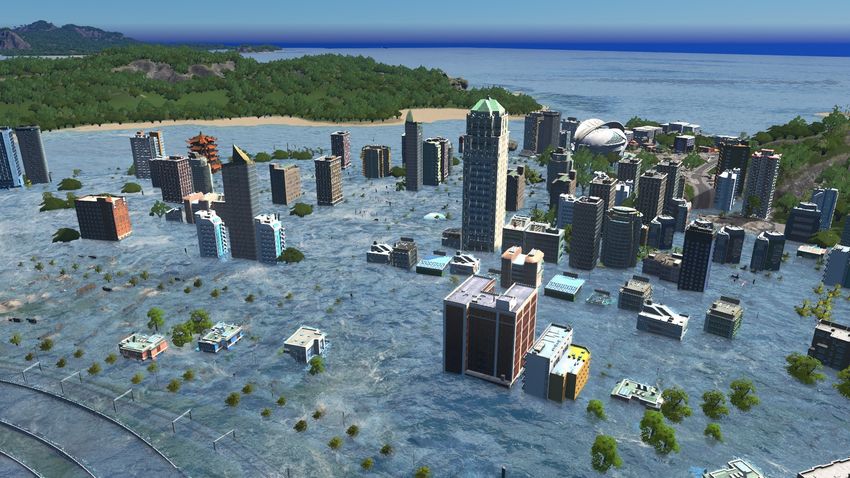Introduction
Tsunamis are one of the most devastating natural disasters, capable of wiping out entire coastal cities within minutes. With waves reaching heights of 30 meters (100 feet) or more, the destruction can be catastrophic. However, engineers around the world have developed cutting-edge strategies to protect cities and minimize damage.
From seawalls to early warning systems, let’s explore the fascinating ways engineers prepare cities for tsunamis and save lives.
1. Understanding How Tsunamis Form
Tsunamis are not just big waves; they are caused by underwater disturbances, usually due to:
🔹 Underwater Earthquakes – The most common cause, occurring when tectonic plates shift.
🔹 Volcanic Eruptions – Underwater or coastal volcanoes can trigger massive waves.
🔹 Landslides – A large chunk of land falling into the ocean can create a tsunami.
🔹 Meteorite Impacts – Rare, but large impacts can generate massive waves.
💡 Fun Fact: Tsunami waves travel as fast as a jet airplane (500-800 km/h) in deep water!
2. Engineering Solutions to Prevent Tsunami Damage
🌊 Seawalls and Breakwaters – First Line of Defense
How They Work:
- Seawalls act as barriers, reducing wave energy before it reaches land.
- Breakwaters (offshore barriers) help slow down waves and prevent direct impact.
Real-World Example:
🇯🇵 Japan’s Tsunami Seawalls – After the 2011 tsunami, Japan built taller, 12-meter-high seawalls along its coastline.
💡 Downside: If a tsunami is too powerful, it can overtop or destroy the seawall.
📢 Tsunami Early Warning Systems (EWS)
How They Work:
- Underwater buoys and sensors detect seismic activity and wave movement.
- Alerts are sent via sirens, mobile networks, and emergency broadcasts to warn residents.
- Gives people precious minutes to evacuate before the tsunami arrives.
Real-World Example:
🌍 Pacific Tsunami Warning Center (PTWC) – Monitors the Pacific Ocean for tsunami threats, alerting countries within seconds of an earthquake.
💡 Fun Fact: Some coastal cities have automated sirens that go off when a tsunami is detected!
🌳 Natural Barriers: Mangroves, Dunes & Reefs
Nature provides some of the best tsunami protection! 🌿🏝️
How They Work:
- Mangrove forests absorb wave energy and reduce flooding.
- Coral reefs act as natural breakwaters, weakening tsunami waves.
- Sand dunes serve as protective barriers against water surges.
Real-World Example:
🇮🇩 Indonesia’s Mangrove Restoration – After the 2004 tsunami, Indonesia planted millions of mangroves to protect its coastline.
💡 Fun Fact: In some places, natural barriers saved villages during past tsunamis!
🏗️ Smart Urban Planning & Elevated Structures
Engineers design cities to reduce tsunami destruction through:
🏢 Elevated buildings – Structures built on stilts or raised platforms keep residents above floodwaters.
🚪 Tsunami-resistant architecture – Buildings with water flow-through designs prevent collapse.
🏃 Evacuation zones & vertical shelters – Coastal cities have tall tsunami towers for people to escape rising waters.
Real-World Example:
🇨🇱 Chile’s Tsunami-Resistant Buildings – Many coastal cities in Chile require new buildings to be tsunami-proof.
💡 Fact: In tsunami-prone areas, evacuation routes are marked everywhere for quick escapes!
3. Tsunami Evacuation Plans: Saving Lives in Minutes
Speed is everything when a tsunami is coming. Coastal cities have evacuation strategies to move people to safety fast.
🏃 Key Evacuation Measures:
✅ Tsunami drills & training – Schools, businesses, and communities practice regularly.
✅ High-ground evacuation routes – Escape routes lead to elevated areas away from water.
✅ Vertical evacuation centers – Special buildings designed to withstand massive waves.
✅ Smartphone alerts – Authorities send emergency messages with live evacuation instructions.
Real-World Example:
🇺🇸 Hawaii’s Tsunami Preparedness – The state has a coastal siren system and mandatory evacuation plans for residents.
💡 Fun Fact: Some cities build pedestrian bridges to high ground for quick evacuations!
4. The Role of AI & Technology in Tsunami Defense
Modern engineers use artificial intelligence (AI) and big data to predict and respond to tsunamis faster.
🚀 AI Innovations in Tsunami Defense:
🤖 AI-powered tsunami simulations – Predicts wave behavior & impact areas.
📡 Satellite monitoring – Tracks ocean changes in real time.
🏗️ Automated flood barriers – Activate when a tsunami is detected.
Real-World Example:
🌏 Japan’s AI Disaster Response – Uses AI-powered modeling to predict tsunami damage and plan evacuations.
💡 The Future: Soon, self-deploying seawalls may protect cities instantly when a tsunami is detected!
5. The Future of Tsunami Engineering: What’s Next?
As climate change and sea levels rise, engineers are working on stronger, smarter defenses against tsunamis.
🔹 Floating Cities – Some countries are designing ocean-based cities that rise with waves!
🔹 Self-healing concrete – New materials can repair cracks after tsunami damage.
🔹 AI-driven early warnings – AI will predict tsunamis faster and more accurately.
🔹 Stronger seawalls & tsunami domes – Next-gen barriers to withstand mega-tsunamis.
💡 Fun Fact: Some engineers are exploring underwater barriers to stop tsunamis before they reach land! 🌊🛑
Conclusion: Engineering the Future of Tsunami Safety
Tsunamis are unstoppable, but with smart engineering, early warnings, and resilient cities, we can reduce damage and save lives. Engineers are constantly innovating, ensuring that coastal communities remain safe in the face of nature’s most powerful waves.


